- info@sintaductrodder.com
- +86 158 3195 8550

When the dawn appears gushing through the tent windowpane after you dozed soundly throughout a night, then there is no doubt that you made yourself a correctly pitched tent. If you have never installed a tent before, here are few tips on how you can set out the tent, this article can assist you with.
The following list of selected practices to protect our wild locations and provide advice on where to install your tent.
Avoid Restrict valleys - which can pretend a peril of stream floods
Avoid Subject to fields - where a deserted canvas can invite thunderbolt
Avoid Adobe soils - which decline defectively and become rumpled in rain
Avoid Rocks and ridge, which can hide from our sight at night
Avoid Squalid water, which is a primary place placing biting insects
If it is a well-traveled location, endeavor for the existing campsite
Look for the location in which they are out of vegetation and build a small tent.
Make a Camp nearby water source, but do not place it too near. Be sure your campsite does not get flooded, so locate your campsite at least 200 ft. apart from the approaching water origin.
Make a good quality tent to manage both wind and rain, and you can overcome these dilemmas and possibilities by deciding campsites that contribute to natural resistance.
Check for consistent windbreakers: You can locate the site between a tree or a hill to protect the tent from commanding wind.
Do not camp near weakened trees or branches that can be swept down by a stern breeze.
Most of the campers will locate a tent by keeping the smaller side of the tent facing towards the wind to overcome resistance, and it is essential to set the side that holds the influential pole construction facing the breeze.
If you are tenting in warm weather, fix an opening toward the wind to give you a cooling effect.
To prevent water-related issues: Explore your tent to the higher ground level which helps to eliminate unwanted dampness and precipitation inside the tent when the temperature drops down.
Fix your tents beneath trees as it can produce a warmer, sheltered microclimate atmospheric condition that will produce moderate levels of precipitation.
Do not camp in a much lower region towards high hills, as the cool, moist air descends at these spots; rainfall can take its route and puddle when a snowstorm departs in.
To hinder rain from storming in, place your opening doorways or windows aside from the breeze.
A proper collection of poles along with an easy foundation practice will set you installing your tent and provide you a delightful experience. A feeble collection of poles, on the contradiction, can cause pitching your tent a bummer.
Use of Ring and pin – a pin placed on a ring bound over the rump of the rope is embedded into the base of the pole. The two most typical ways the poles correlate with the tent are:
Pin and grommet – each point of the pole own a pin that is injected into a grommet found on a rope at the rump of the tent.
The comparatively low price of fiberglass rods makes it the best choice for affordable tents. The comparatively low-priced fiberglass rods make it the recommended choice for inexpensive tents. But its characteristics of pliability causes the tent to bend down with the breeze which leads to shedding winds instead of standing strong against them.
This aspect can be unsettling when encountered for the first point of course. But still, pliability preferably than firmness does indicate the complete weight of the tent can be put down when correlated with those practicing with steel poles.
Regrettably, this disappointing feature of fiberglass rods can confer pitching a longer tent uncomfortable when the weight of the foundation damages the poles and put them to the elevated posture– particularly in stormy situations.
Accidents can happen, and the fiberglass rods will dispense its projections for it manages to break into pointer like shards. The most high-priced fiberglass rods, namely Durawrap, is designed to overcome this uncertainty or seldom highlight a plastic bundle.
Fair wreck from your tent section: Your intention is to shield the tent ground and separate objects that can punch you backward. You are not into the mining project, so select another campsite if you think there are major work needed to make a tent in the chosen spot.
If the climate seems stormy, spike down the tent edges: A powerful cyclone can knock out your tent, so consider more like you are navigating a kite. Immediately spike down the angles at the origin; it is an easy job to refix your tent in its ultimate point later.
Steadily handle the poles: While making a setup for poles, it can get jerked or broken, so go slow and steady, no problem if you spend few extra minutes to unfold and locate each pole part with great concern and care.
Make a good quality tent to manage both wind and rain, and you can overcome these dilemmas and possibilities by deciding campsites that contribute to natural resistance.
You can able to perceive maximum gripping power in most kinds of the soil if your stake is completely perpendicular as you propel it into the soil ground.
Leave adequate stake uncovered to enable you to slide a tie-down rope over it.
If you could not be able to launch the stake in with your support of hand or foot, you have an option of using huge rock or stone to complete this task; further, you can also carry a personal stake hammer.
Carry additional stakes if in situation any ducked rock or stone distort one of your stakes.
Consider collecting debris support or snowflake stakes for those particular environmental conditions.
Cover the flysheet of a tent: On the bottom of the flysheet of the tents, you will notice numerous fastener covers close to the tent poles; ensuring each of these neighboring the nearby pole will support stabilizing and bolster your tent.
A perfectly pitched tent holds a firm flysheet. Maximum flysheets will contain thongs which you can fix securely at the tent edges. Tight these constantly and recheck fly balance regularly, particularly before poking in every night, because varying climate influences the stake.
When you are on the initial setup of the tent, make sure you do not over-tension the front fly edge; instead, abide until the fly sheet is completely covered and then you start tensioning all the edges uniformly.
Monitor the tensioning by examining whether the joints on the fly group up with the joints and shafts on the tent; if not, rearrange the tension so that they will be arranged properly.
Periodically re-check the flysheet tension after it becomes wet because most fly objects expand when it gets wet or moist.
 Duct Rodder
Duct rodder, it is an excellent cable pulling tool. Smooth and resilient surface allows the piercer easily pass through the narrow pipeline. Commonly used in telecommunication pipeline cleaning.
Duct Rodder
Duct rodder, it is an excellent cable pulling tool. Smooth and resilient surface allows the piercer easily pass through the narrow pipeline. Commonly used in telecommunication pipeline cleaning.
 Fiberglass Duct Rodder
Fiberglass duct rodder, It is an auxiliary tool for cable laying in pipelines, and can collect cables conveniently. It is ideal for electrical wire pulling works.
Fiberglass Duct Rodder
Fiberglass duct rodder, It is an auxiliary tool for cable laying in pipelines, and can collect cables conveniently. It is ideal for electrical wire pulling works.
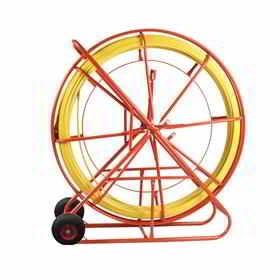 Cobra duct rod
Cobra duct rod is also named cobra conduit rod. It is widely used in various kinds of electric cable pulling pipe line project
Cobra duct rod
Cobra duct rod is also named cobra conduit rod. It is widely used in various kinds of electric cable pulling pipe line project
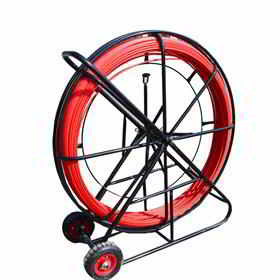 Traceable duct rodder
Traceable duct rodder is a unique type duct rodder with cooper wire inside, which can allow users follow and find the duct rod's route easily.
Traceable duct rodder
Traceable duct rodder is a unique type duct rodder with cooper wire inside, which can allow users follow and find the duct rod's route easily.
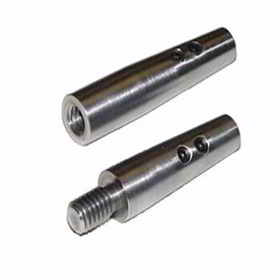 Duct Rodder Accessories
Duct rodder repairt kit of duct rodder includes 5 pcs accessories, drawing head, rod grapple, flexible leader, roller guide, and swivel coupling. The accessories make the cable running easy and simple.
Duct Rodder Accessories
Duct rodder repairt kit of duct rodder includes 5 pcs accessories, drawing head, rod grapple, flexible leader, roller guide, and swivel coupling. The accessories make the cable running easy and simple.
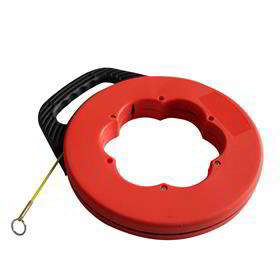 Fish Tape
Fish tape is an ideal tool widely used by an electrician to route through electrical conduit or walls for wires pulling.
Fish Tape
Fish tape is an ideal tool widely used by an electrician to route through electrical conduit or walls for wires pulling.
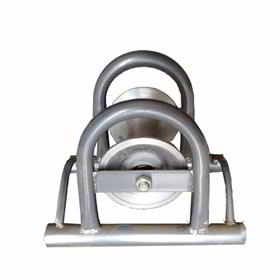 Cable Rollers
Cable rollers are widely used to protect cable from damaged in the field of construction during the cable-laying.
Cable Rollers
Cable rollers are widely used to protect cable from damaged in the field of construction during the cable-laying.
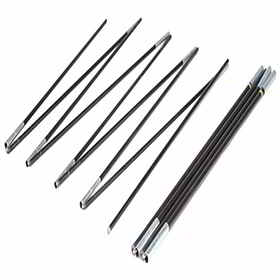 Push Pull Rod
Fiberglass push pull rod is a tooll used for pushing or pulling the wire, cable easily through pipeline or crawl spaces etc. It is widely used in construction, residential electrical and commercial industries. It is excellent for hard to reach places
Push Pull Rod
Fiberglass push pull rod is a tooll used for pushing or pulling the wire, cable easily through pipeline or crawl spaces etc. It is widely used in construction, residential electrical and commercial industries. It is excellent for hard to reach places
Main Products
Tell Me What by wechat
